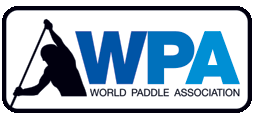Stand Up Paddling
WPA Canada was established to support the growing sport of Stand Up Paddling here in Canada. As the Canadian branch of the World Paddle Association we adhere to all WPA standards and ensure fairness in all WPA Canada events.
The mission of the WPA is to provice a comprenhensive voice, fair and equal access and organizational structure to the sport of Stand Up Paddling (SUP) and its participants in a manner that benefits the collective paddling community.
Applications for WPA Canada event sanctioning can be found here (APPLICATION FORM).
Please email completed forms to info@wpacanada.com
For requests for WPA Canada SUP Instructor certification please visit the SUP Instructor Certification page for more detail.
Stand up paddle surfing (SUP), or in the Hawaiian language Hoe he’e nalu, is an emerging global sport with a Hawaiian heritage. The sport is an ancient form of surfing, and reemerged as a way for surfing instructors to manage their large groups of students, as standing on the board gave them a higher viewpoint. This increased visibility of what was going on around them such as incoming swell.
The popularity of the modern sport of SUP has its origin in the Hawaiian Islands. In the early 1960s, the Beach Boys of Waikiki would stand on their long boards, and paddle out with outrigger paddles to take pictures of the tourists learning to surf. This is where the term “Beach Boy Surfing”, another name for Stand Up Paddle Surfing originates.
The sport benefits athletes with a strong ‘core’ workout. SUP’ing is popular at warm coastal climates and resorts, and is gaining in popularity as celebrities are sampling the sport, and cross-over athletes are training with SUP. SUPs have been spotted around the globe, anywhere where there is easy access to safe waters, as well as in the surfing lineups of the world. Another reason for the rise in popularity of stand up paddleboarding is that, unlike surfing, paddleboarding is very easy to learn. Within one hour you can become very comfortable in the water and on your board. Stand up paddleboarding is also more popular with women and because of their lower center of gravity, women are often more skilled at paddleboarding than men.
Laird Hamilton and Dave Kalama re-introduced the ancient sport of paddle surfing to the modern water sports world. The first “modern” surfer to bring Stand Up Paddle Surfing out of Hawaii and onto mainland USA was Vietnam veteran, Rick Thomas. In 2000, Rick – on a 11ft Muñoz board, and with a Leleo Kinimaka paddle – introduced California to the new sport.
Surfers have converted because of the versatility of the new sport. Stand up paddle boarding offers surfers the ability to catch more waves in a set, as well as offering a better view of incoming sets.
New custom SUP board prices range from US$600 to US$1500, and most use glass-reinforced plastic construction using epoxy resin that is compatible with the expanded polystyrene foam used in the core. Some SUP boards use a hollow wood construction instead of foam with epoxy resin.[4] The boards are generally longer than 9 feet (3 m), and up to 12 feet (4 m) or more in length, with features such as padded decks and concave hulls; they generally have one or three surfboard-style fins in the stern for tracking.
As of October 3, 2008, the US Coast Guard now classifies Stand Up Paddling(SUP)s as vessels and as a result SUP riders are obliged to wear a personal flotation device when paddling in certain areas. Whether this will affect the continued take up of stand up paddling in the USA remains to be seen. The Canadian Coast Guard has implemented similar rules, however SUPer’s are only required to have a PFD with them, they don’t have to wear them.

